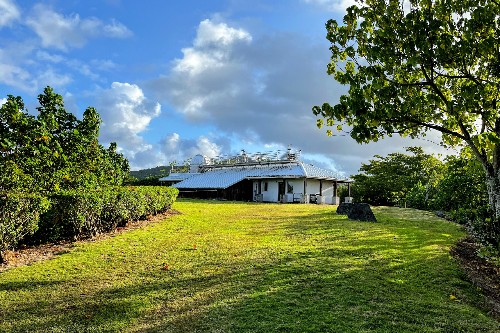Global Emissions Spotted Of Several Banned Ozone-destroying Chemicals Are Increasing
New analysis has found increasing emissions of several ozone-depleting chemicals despite their production being banned for most uses under the Montreal Protocol – and a loophole in the rules is likely responsible.
The research, published today in Nature Geoscience and led by the University of Bristol and National Oceanic and Atmospheric Administration (NOAA), puts the rise in part down to the chemicals, known as chlorofluorocarbons or CFCs, being used to make other ozone-friendly alternatives to CFCs. This is an exception allowed under the Montreal Protocol, but contrary to its wider goals.
Lead author Dr Luke Western, a Research Fellow at the University of Bristol and researcher at the NOAA’s Global Monitoring Laboratory (GML), said: “We’re paying attention to these emissions now because of the success of the Montreal Protocol. CFC emissions from more widespread uses that are now banned have dropped to such low levels that emissions of CFCs from previously minor sources are more on our radar and under scrutiny.”
According to the researchers, emissions from these CFCs currently do not significantly threaten ozone recovery. But because they’re potent greenhouse gases, they still affect the climate.
“Combined, their emissions are equal to the CO2 emissions in 2020 for a smaller developed country like Switzerland, said Western. That’s equivalent to about one percent of the total greenhouse gas emissions in the United States,” added Dr Western.
The international study was conducted by a team of scientists from the UK, US, Switzerland, Australia, and Germany.
CFCs are chemicals known to destroy Earth’s protective ozone layer. Once widely used in the manufacture of hundreds of products including aerosol sprays, such as blowing agents for foams and packing materials, solvents, and in refrigeration, CFC production for such uses was banned under the Montreal Protocol in 2010.
However, the international treaty didn’t eliminate the creation of CFCs during production of other chemicals including hydrofluorocarbons or HFCs, which were developed as second-generation replacements for CFCs.
This study focused on five CFCs with few, or no, known current uses—CFC-13, CFC-112a, CFC-113a, CFC-114a, and CFC-115—and that have atmospheric lifetimes ranging from 52-640 years. In terms of their impact on the ozone layer, these emissions were equivalent to around one quarter of a recently detected rise in emissions of CFC-11, a substance controlled under the Montreal Protocol, thought to be due to unreported new production.
In this study, the team used measurements from the Advanced Global Atmospheric Gases Experiment (AGAGE), in which the University of Bristol plays a pivotal role, as well as others made by Forschungszentrum Jülich, in Germany, the University of East Anglia, and NOAA in the US. These were combined with an atmospheric transport model to show that global atmospheric abundances and emissions of these CFCs increased after their production for most uses was phased out in 2010.
The researchers determined that for three CFCs they studied – CFC-113a, CFC-114a and CFC-115 – the increased emissions may be partly due to their use in the production of two common HFCs used primarily in refrigeration and air conditioning. The drivers behind increasing emissions of the other two CFCs, CFC-13 and CFC-112a, are less certain.
Although the team found rising global emissions, they weren’t able to identify particular locations.
“Given the continued rise of these chemicals in the atmosphere, perhaps it is time to think about sharpening the Montreal Protocol a bit more,” said study co-author Dr Johannes Laube, from the Institute of Energy and Climate Research (IEK) at Forschungszentrum Jülich.
According to the researchers, if emissions of these five CFCs continue to rise, their impact may negate some of the benefits gained under the Montreal Protocol. The study noted these emissions might be reduced or avoided by reducing leakages associated with HFC production and by properly destroying any co-produced CFCs.
Dr Western concluded: “The key takeaway is that the production process for some of the CFC-replacement chemicals may not be entirely ozone-friendly, even if the replacement chemicals themselves are.”

